Spirit of Sugarlandia: Why Filipino rum Don Papa is one to watch
Rum might be more closely associated with the Caribbean, cocktails and Jack Sparrow, but it has a long and murky history in the Philippines, too. Hannah Twiggs heads to Sugarlandia, AKA the island of Negros, to discover Don Papa, a new premium brand finally telling the world its story

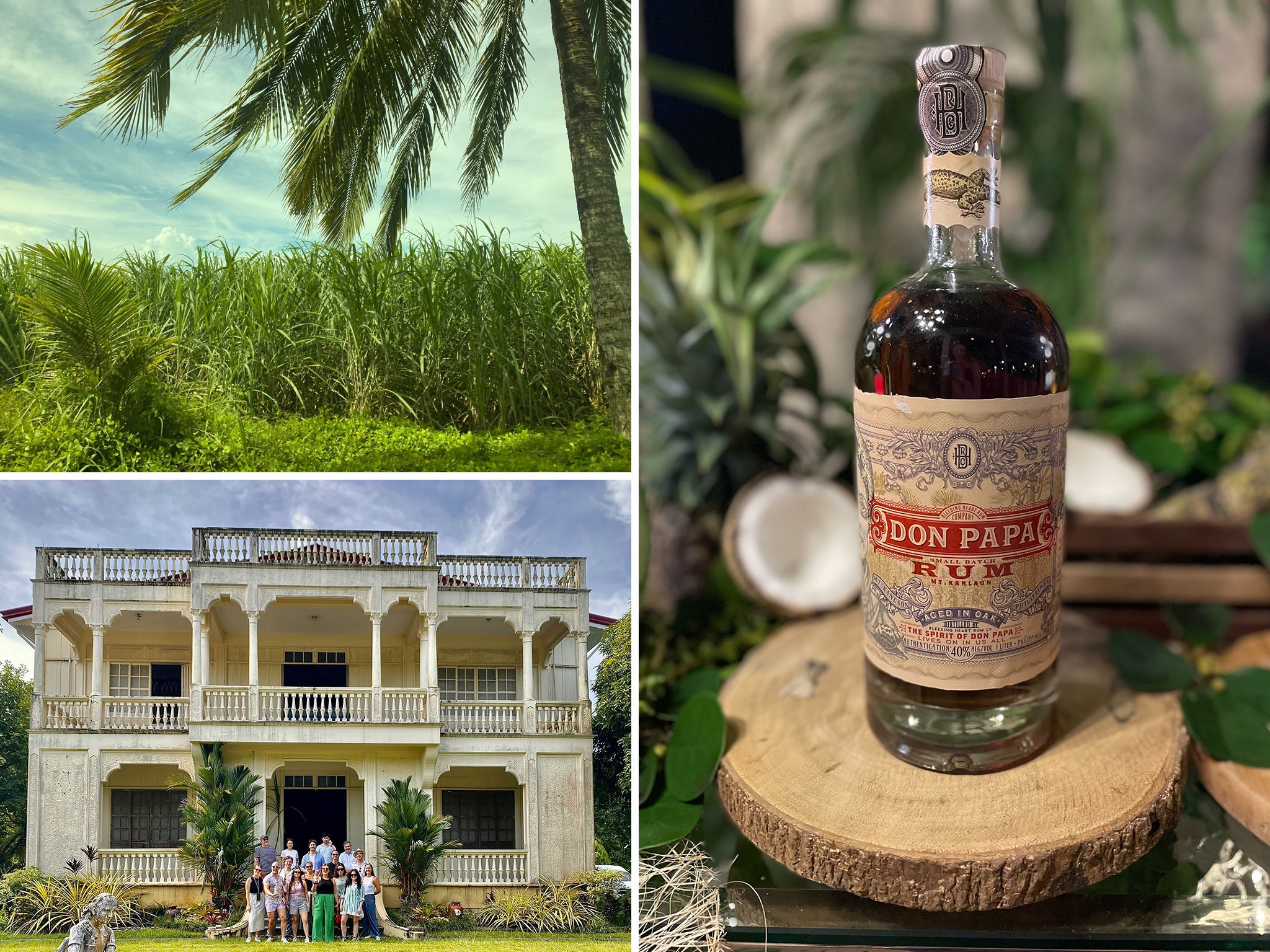
Your support helps us to tell the story
From reproductive rights to climate change to Big Tech, The Independent is on the ground when the story is developing. Whether it's investigating the financials of Elon Musk's pro-Trump PAC or producing our latest documentary, 'The A Word', which shines a light on the American women fighting for reproductive rights, we know how important it is to parse out the facts from the messaging.
At such a critical moment in US history, we need reporters on the ground. Your donation allows us to keep sending journalists to speak to both sides of the story.
The Independent is trusted by Americans across the entire political spectrum. And unlike many other quality news outlets, we choose not to lock Americans out of our reporting and analysis with paywalls. We believe quality journalism should be available to everyone, paid for by those who can afford it.
Your support makes all the difference.Bundled in a minibus with a rabble of other sweaty journalists, arms full of Filipino snacks hastily purchased from a roadside 7-Eleven in the hopes of soothing our pounding rum-induced hangovers, we set off into a downpour on one of Negros island’s busiest rural highways. Driving here is like Mario Kart on steroids. On either side of our rickety little refuge, seven metre-high walls of sugarcane protrude from the earth like giant tufts of grass; we, the ants.
“Welcome to Sugarlandia,” the driver shouts over the sound of screeching wheels, road rage and rain battering the windows.
The less whimsical name for this side of the island – the second largest in the archipelago – is Negros Occidental, and it’s where almost half of the country’s sugar is produced. It’s also the birthplace of Don Papa, both the premium sipping rum which I am here to discover (and can thank for the hangover) and the 19th-century revolutionary, Papa Isio, after whom it’s named. More on that guy later.
Think of rum and I doubt the Philippines is what immediately springs to mind. For me, it’s ill-fated attempts to enjoy pina coladas (I simply don’t). Or the Caribbean (which I do enjoy quite a bit). Or Jack Sparrow asking why the rum is always gone.
After a night on the tiles in the capital Manila the night before, I have some notion as to where the rum might have gone. In fact, a great deal of it comes and goes from the Philippines; it’s the third-largest rum market in the world after India and the States, and Tanduay, the world’s largest producer of rum, set up shop here in 1854. While the pirates of the Caribbean probably weren’t drinking the stuff in the 1700s, the history of the spirit in the Philippines dates back even further than that, and it starts with rum’s main ingredient: molasses, a byproduct of the sugar industry. Sugarcane has been prevalent here since 2200 BC, and was traditionally used in pre-colonial Philippines to make various jaggery (unrefined sugar) products, including cane wine, juice and drinking vinegars.
It wasn’t industrialised until 1856, when British vice-consul Nicholas Loney arrived and, seeing its potential, imported machinery from England and Scotland, built sailing boats to export the sugar and offered lucrative deals to Negrense planters, all of which lured prominent sugar families (or, to use their more sinister name, barons) to Negros, many of the descendants of whom are still there today. It quickly became the Philippines’ most important agricultural export, and it still is. When the first Tanduay distillery was established by a powerful Filipino family in 1854, the country’s rum industry took off.
This was around 50 years before the end of the Spanish colonial period in the Philippines – they’d been “exploring” the area since the early 16th century. The Hispanic influence can be seen today in everything from the country’s name (after Spanish King Philip II), common surnames like de la Cruz and del Rosario, and the religion (80 per cent Catholic), to the architecture (mostly crumbling, elegant facades and obnoxiously big churches), and the cuisine, which is essentially Southeast Asian tapas (and delicious).
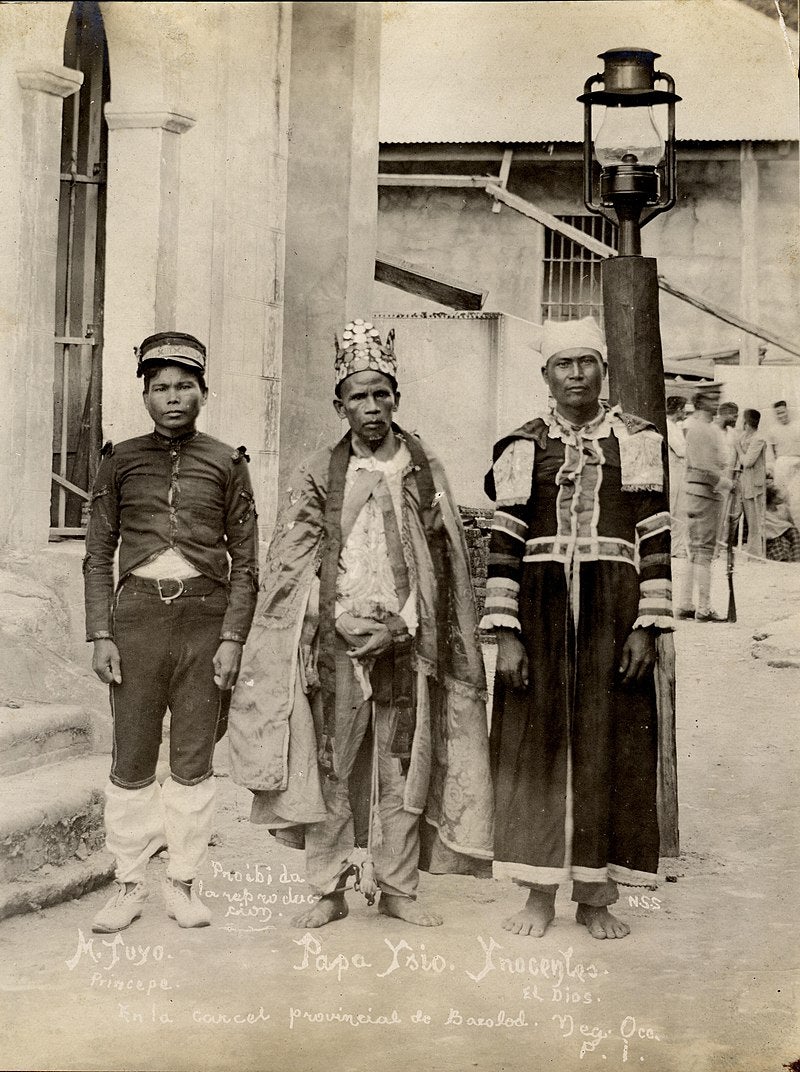
It also gave rise to the legend of Papa Isio. The story goes: when he was a young boy, he saw the loss of his family’s land to the arrival of the Negros sugar barons, and later was involved in an altercation with a Spanish solider, which forced him to flee for his life into the mountains. There, he met a group of babaylanes (Filipino shaman) who were leading a revolt against the Spanish. He became their leader and led assaults on Spanish camps, shouting “Long live a free Philippines!” and “Death to Spaniards!” as they descended from the hills. He eluded capture for many years until, having fallen in love with a young woman in a nearby village, was lured out of hiding when he received news that she’d been taken hostage by the Spanish. Of course, it was a ruse. He was captured and died in prison.
Papa Isio’s legend, and the patchwork history and natural beauty of Negros, forms part of the inspiration behind Filipino rum newcomer Don Papa. Over a decade ago, then Remy-Cointreau exec Stephen Carroll visited Bacolod, the de facto capital of Negros, and heard stories of Papa Isio and talk that the sugarcane grown here was some of the finest in the world thanks to the humid climate and rich volcanic soils. He visited Hacienda Rosalia, the ancestral home of Victor Gaston, widely credited as one of the first sugar barons to commercially produce cane sugar. His descendants still run the operation and live in the enormous 1930s mansion on the grounds. Over coffee with his new friends, Carroll remarked on the abundance of sugarcane, fields of which extended as far as the eye could see, but asked: “Where’s the premium rum?”
Tanduay might be the oldest and biggest rum producer in the Philippines – walk into any KTV bar (karaoke is as popular here as rum – believe me, I have video evidence) and you’ll inevitably see its yellow label on the shelf – but the fiery caramel liquor is best when tamed by mixers in a cocktail. A premium sipping rum, it is not (for the faint of heart, at least).
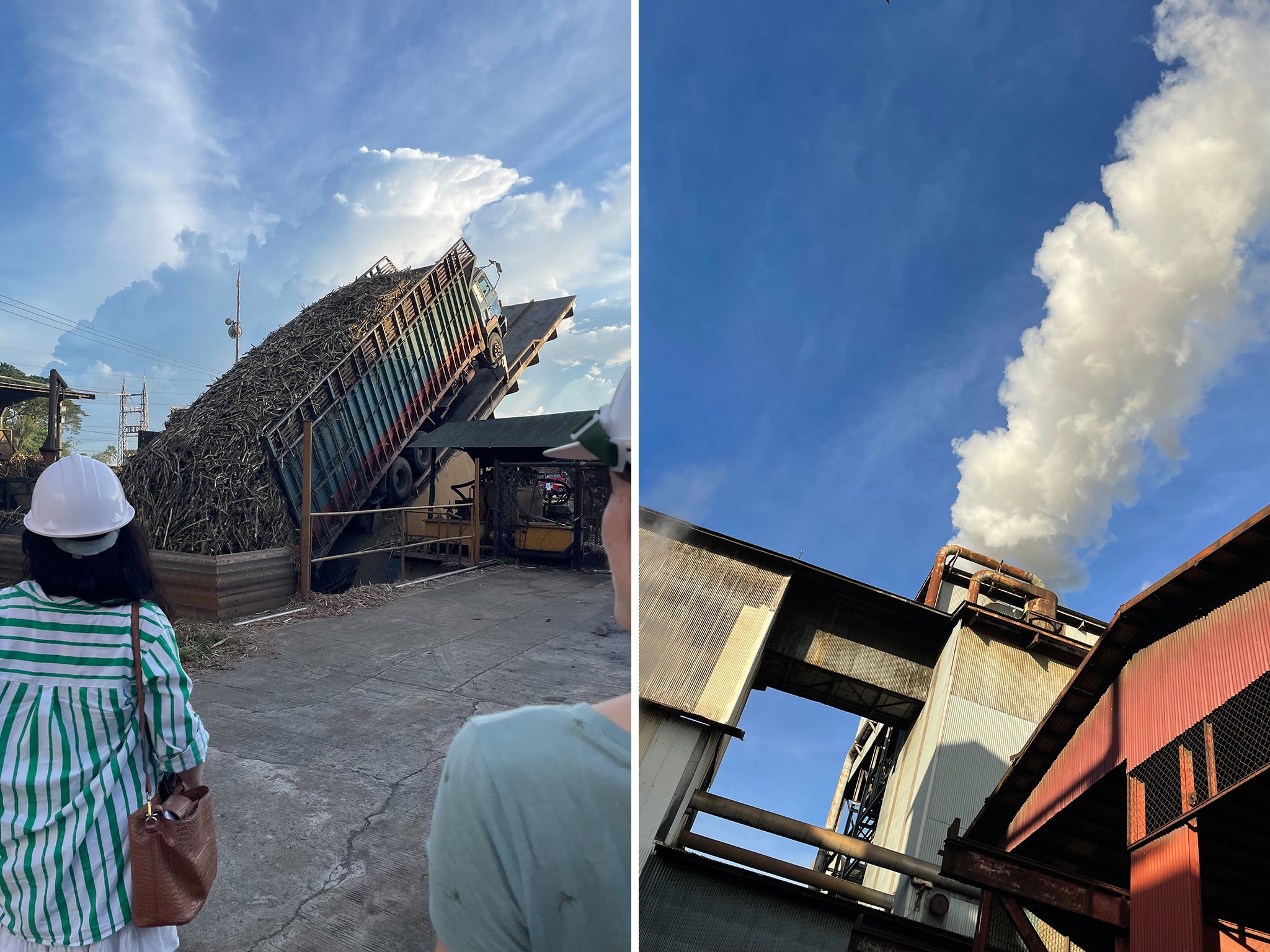
So Carroll left his corporate life and founded the Bleeding Heart Rum Company in 2012 and started producing Don Papa, with a view to bottle the essence of Sugarlandia.
When we arrive at the distillery not far away, hangovers (and faith in road safety) dissipating, a lorry is emptying its bowels, full of freshly macheted sugarcane from the fields, into a pit ready to head into the factory. Arrive at the right time and you can literally taste sugar in the air as the cane hits the concrete. The harvest is then slowly ferried inside to be transformed into sugar. The molasses – the thick, brown syrup leftover once the sugar has been extracted from the cane juice – is called “black gold” for a reason. Gutters of the stuff criss-cross the factory floor on its way to column stills, and later wooden casks that give it that signature smooth taste. The Philippines’ colonial past can be felt here too. This is the Spanish method for producing rum and sets it apart from other varieties found around the world, such as French in the Caribbean, which is made directly from sugarcane and tends to be fresher and lighter, or the English way, which uses copper stills and barrels for ageing and is spicy and dark.
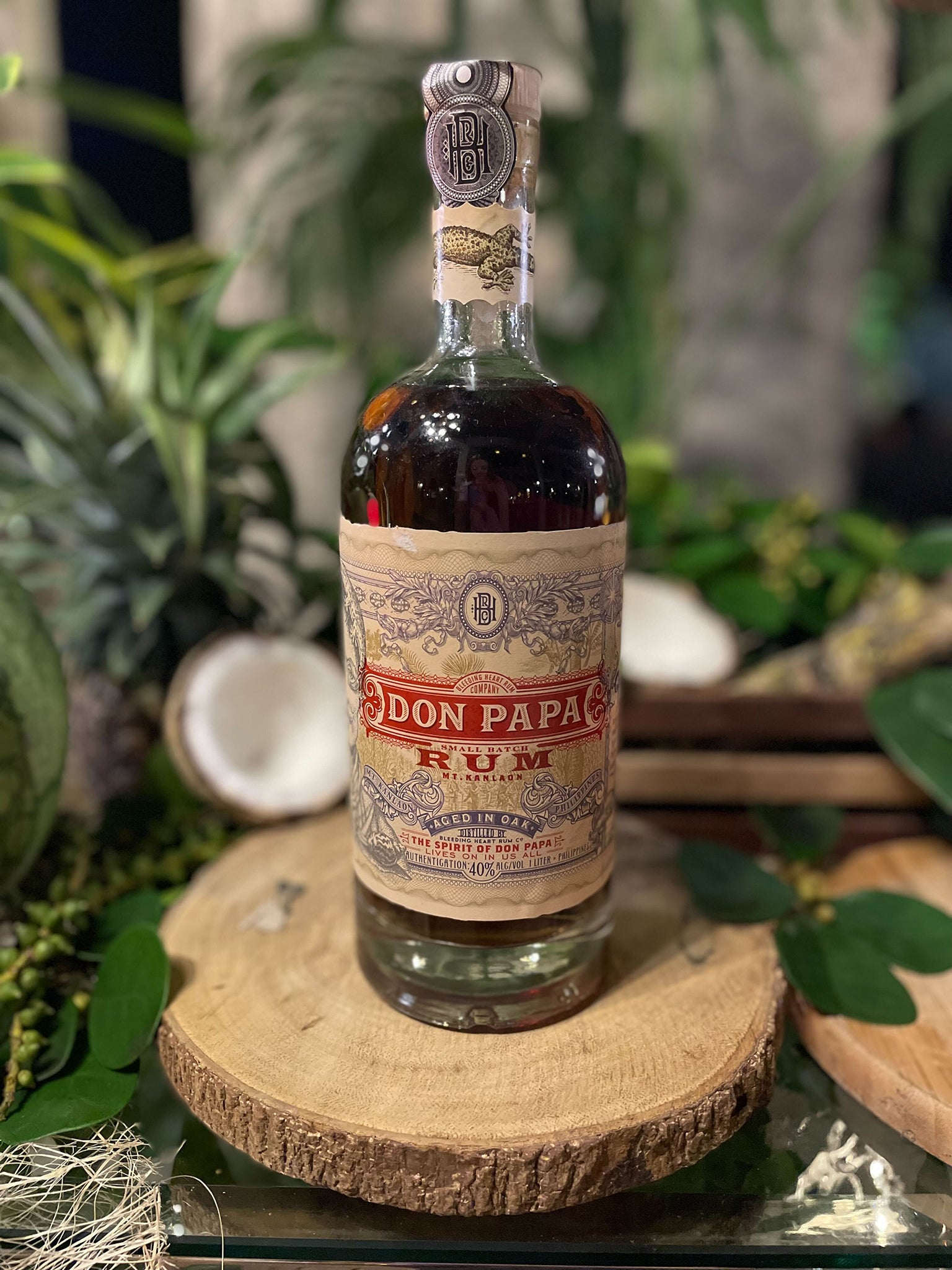
Don Papa sources secondhand casks soaked in things like bourbon, sherry and port to age their rum for up to seven years, which lends a distinctive flavour to each of their blends. The original Don Papa rum, which was introduced in the Philippines in 2012 and five years later, the world, is aged in ex-bourbon oak barrels and blended with Mount Kanlaon (the local active volcano) spring water. At a tasting, we sip it straight for bold notes of vanilla, honey, candied fruits and a hint of citrus. Don Papa 10, aged for an additional three years in a re-charred barrel, is darker and bolder, with hints of dried fruits and cacao. Masskara, their newest blend and my favourite, is pot-distilled and infused with calamansi (Filipino lime) for citrus, honey for sweetness and siling labuyo (a native type of chilli) for heat and spice. Other blends include one finished in four different types of sherry casks that results in a dry, almost nutty aroma and a smooth finish; another gets an extra five years in ruby-hued ex-port casks and is rich and mouth-coating. It’s not a new or exclusive technique – many if not all rums and various other spirits are flavoured in this way – but it’s fair to say that the master distillers at Don Papa are constantly innovating. Purists, look away now.
In fact, purists are looking quite closely: a liquor company in the States launched a class action in 2022 that argued Don Papa should be labelled “imitation rum” for its alleged use of additives. But then, this isn’t Bordeaux. There’s always been an unruliness to rum. Its versatility is exactly why it’s a bartender’s favourite. Certainly an argument over whether to call a spade a spade didn’t stop British beverage giant Diageo from acquiring the brand earlier this year for a whopping £226m – and that’s just an initial estimate. If Diageo is betting that a super premium liquor can survive a crashing economy, Don Papa and its ilk are lined up to become the next big thing.
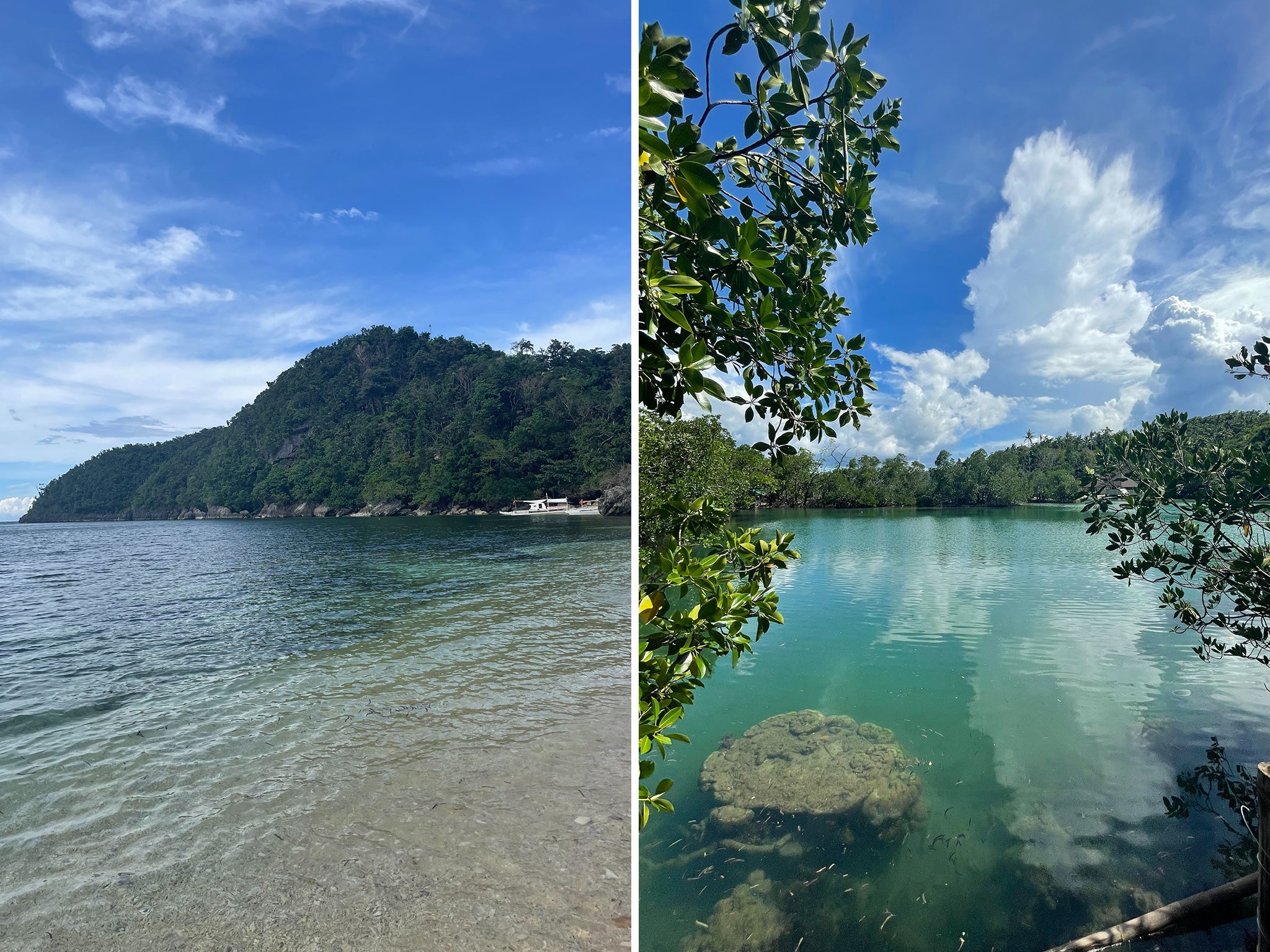
While exciting news, Carroll is keen to preserve the story of Don Papa, Papa Isio and Negros. That starts with the packaging, which is 100 per cent recyclable and designed by local artists, often featuring Isio and an array of flora and fauna native to the island. There are projects to support farmer livelihoods, a divvying up of profits that seems fair, and, fun fact, the workforce is 66 per cent female. At its core, the Philippines has always been a matriarchal society. They’ve also partnered with the Talarak Foundation and the Philippine Reef and Rainforest Conservation Foundation (PRRCFI) to support the environment.
We visit one such project on Danjugan island, a 43-hectare oasis off the southern coast of Negros, home to straight-out-of-a-brochure white sandy beaches, lagoons, bat caves, mangrove forests and coral reefs. Once at risk from over-fishing, the PRRCFI stepped in in 1994 and created a sanctuary for the hundreds of species of fish, coral, birds, bats and plants that call this place home. A handful of tourists (or rum-filled journalists) are permitted to visit but it’s not a resort: only 10 per cent of the island is developed. You’re welcome to stay a night or two, then politely asked to leave.
After a banca boatride back to Negros and a boodle fight on the beach (not an actual fight but a fireside feast, where cutlery is dispensed and sharing encouraged), I find myself sipping rum among new friends into the early hours of the morning. We’re playing Never Have I Ever with the locals. Someone’s nicked my Birkenstocks, someone else can’t remember where we are (or perhaps that’s also the thief), and far too many secrets are revealed. But I’m beginning to see why Carroll was so mesmerised by this place they call Sugarlandia.
Don Papa’s USP is not just that it’s quintessentially Filipino – which, if not clear by now, hasn’t been novel since the 19th century – nor that it’s the country’s first premium sipping rum, but that it’s a spirit with a story; a tipple with a tale. Though fairly unknown in the UK for now and tit-for-tats aside, it’s one I hope punters are willing to hear. Just not in a pina colada, please.




Join our commenting forum
Join thought-provoking conversations, follow other Independent readers and see their replies
Comments